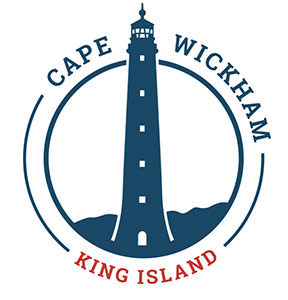Cape Wickham
– An Architect’s Perspective
By Darius Oliver
Nearly ten years on, I can still remember the first time I saw Cape Wickham. It was 2011 and I was visiting King Island for an Australian Golf Digest story on the charming 9-hole King Island Golf & Bowling Club. With time to spare in the afternoon Jim Cooper, the club’s Secretary at the time, took me north to see where Andrew Purchase from Turnpoint wanted to build a new golf course. It was Cape Wickham. The site took my breath away, and so began a new career for me in golf course design.
Oddly enough, the first thing I did when I returned to Victoria from King Island was to call Purchase and plead with him NOT to build his golf course. We had never met, but he listened and agreed that if golf was going to work on that island the course needed to be extraordinary. His site was very good, but it overlooked arguably the finest golf land anywhere in the world. We needed that land, and to shift his proposed golf course onto the coastal crown reserve.
‘Shortly afterwards Duncan Andrews also visited Cape Wickham, and he agreed that the coastal reserve land was ideal for golf. This was a crucial moment, because of Duncan’s success building The Dunes and Thirteenth Beach in Victoria, and his commitment to Cape Wickham, should we be able to acquire a leasehold agreement on the crown land. So began a lengthy negotiation with the Tasmanian Government and its Parks Department for the use of the crown reserve at Cape Wickham, and the building of what we all hoped would become a true golfing icon for the state.
My own view from day one at Cape Wickham, was that we weren’t building a course for immediate accolades but instead trying to establish something that could attract thousands of annual golfers to the island for decades to come. I often asked myself the rhetorical question; if Cypress Point were on King Island and you could pay a green fee to play it, would people make the trip? I thought the answer was obviously yes, and also that we had the only site on the globe with that same sort of magical setting. I hesitate to compare our finished course to Cypress Point, but of the almost 2,000 golf courses I have personally seen or played worldwide there are only a handful that I genuinely believe are in Cape Wickham’s league. Cypress Point is one of them.
None of this was to suggest that the design of Cape Wickham was simple. There were lengthy and numerous discussions between myself, Duncan Andrews and co-designer Mike DeVries about the routing and various loops of holes, as well as lively debates around bunkering, greens shaping and general links philosophies. I started the project as a consultant, but ended up leading much of the design and being responsible for many of the holes at Cape Wickham that I love the most.
All told I spent in excess of 200 days on the island during construction, and am thankful to this day that Duncan Andrews insisted I handle design at Wickham, and that he recognised my passion for the project, and knowledge of golf course architecture, as well as my ability to filter the poor ideas from the good ones, in order to find appropriate design solutions. There were great holes everywhere at Cape Wickham, and a sober analysis of the various Pros and Cons was essential to the routing, as was direct supervision of every element of construction. We didn’t want to sign off on a single bunker, or small bump in a green, unless we were sure it would add to the enjoyment and fun of the golf course – and not for good players, but for all visitors.
The work of Purchase, lead shaper Lindsay Richter and the team at Turnpoint during construction should not be forgotten here. The holes at Wickham were only obvious on the ground, and successful in reality, because the construction team had the discipline and dedication necessary to spend any extra hours needed to make sure things were as close to perfect as possible. They taught me a lot about design and we all owe them a debt of gratitude for the holes they helped create.
Cape Wickham is not really a championship test as most modern courses are marketed, but rather it’s a throw back to the old fashioned links of Ireland and the United Kingdom – with a more spectacular landscape. If the wind blows the holes are tough enough, but with light winds there are birdie opportunities all over the course. In some ways, for me, the beauty of the course is the quality of its unheralded holes. I think the 5th and 13th, for example, would be feature holes on most courses around the world, but they seem to escape the limelight at Wickham because they either aren’t directly on the coastline or, in the case of the 13th, are overshadowed by more glamorous par fives. If my home club had a hole like the 13th, or a mid-length par four like the 5th, they would be my favourite holes. At Cape Wickham they generally queue for attention behind the likes of the 18th, 9th, 10th, 1st, 12th, 11th, 7th, 14th, 15th, 16th and 17th.
I once wrote of Cape Wickham, “Why play golf, if not to discover a place like this?” I am still in awe of her to this day, and still dream of playing Wickham whenever I travel or whenever I find myself on the first tee of another golf course instead. The lure of the island, the site, the lighthouse and, most importantly, those wonderful holes at Cape Wickham will remain with me, I think, until I give up this great game. It was a privilege to have been involved in the creation of such a course.







